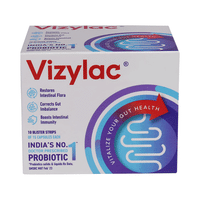Jidox AZ 200 mg/250 mg Tablet

food interaction for Jidox AZ
alcohol interaction for Jidox AZ
pregnancy interaction for Jidox AZ
lactation interaction for Jidox AZ
food
alcohol
pregnancy
lactation
Jidox AZ 200 mg/250 mg Tablet may be taken with or without food, but it is better to take it at a fixed time.
None
None
CAUTION
It is unsafe to consume alcohol with Jidox AZ 200 mg/250 mg Tablet.
UNSAFE
Jidox AZ 200 mg/250 mg Tablet is generally considered safe to use during pregnancy. Animal studies have shown low or no adverse effects to the developing baby; however, there are limited human studies.
SAFE IF PRESCRIBED
Jidox AZ 200 mg/250 mg Tablet is safe to use during breastfeeding. Human studies suggest that the drug does not pass into the breastmilk in a significant amount and is not harmful to the baby.
There may be a possibility of diarrhea or rash in the baby.
There may be a possibility of diarrhea or rash in the baby.
SAFE IF PRESCRIBED
SALT INFORMATION FOR Jidox AZ
Cefixime(200mg)
Uses
Cefixime is used in the treatment of bacterial infections.
How it works
Cefixime is an antibiotic. It kills the bacteria by preventing them from forming the bacterial protective covering (cell wall) which is needed for them to survive.
Common side effects
Nausea, Diarrhea, Vomiting, Headache, Loose stools, Flatulence, Abdominal pain, Dyspepsia, Pseudomembranous colitis, Anaphylactic reaction, Abnormal liver function, Renal failure, Dizziness, Seizure, Blood cell abnormalities, Increased prothrombin time, Increased lactate dehydrogenase level in blood, Genital itching, Vaginal inflammation, Candidiasis, Toxic epidermal necrolysis, Increased bleeding tendency, Urine discoloration, Discoloration of stool, Body ache, Weight loss, Cough, Hoarseness of voice
Azithromycin(250mg)
Uses
Azithromycin is used in the treatment of bacterial infections. It is used in bacterial infections of tonsils, sinus, ear, nose, throat, skin and soft tissues and lungs (pneumonia).
How it works
Azithromycin is an antibiotic. It works by preventing synthesis of essential proteins required by bacteria to carry out vital functions. Thus, it stops the bacteria from growing, and prevents the infection from spreading.
Common side effects
Vomiting, Nausea, Abdominal pain, Diarrhea, Headache, Palpitations, Chest pain, Indigestion, Flatulence, Dark colored stool, Vaginal moniliasis, Vaginal inflammation, Fatigue, Rash, Itching, Photosensitivity, Nephritis, Dizziness, Vertigo, Angioedema (swelling of deeper layers of skin)
SUBSTITUTES FOR Jidox AZ
377 Substitutes
377 Substitutes
Sorted By
 Rs. 185save 35% more per Tablet
Rs. 185save 35% more per Tablet Rs. 302.50pay 7% more per Tablet
Rs. 302.50pay 7% more per Tablet Rs. 195.80save 31% more per Tablet
Rs. 195.80save 31% more per Tablet Rs. 238save 16% more per Tablet
Rs. 238save 16% more per Tablet Rs. 169save 40% more per Tablet
Rs. 169save 40% more per Tablet
Expert advice FOR Jidox AZ
- Your doctor has prescribed Cefixime to cure your infection and improve your symptoms.
- Do not skip any doses and finish the full course of treatment even if you feel better. Stopping it early may make the infection harder to treat.
- Take it with food to avoid an upset stomach.
- Diarrhea may occur as a side effect but should stop when your course is complete. Inform your doctor if it does not stop or if you find blood in your stools.
- Discontinue Cefixime and inform your doctor immediately if you get a rash, itchy skin, swelling of face and mouth, or have difficulty in breathing.
Frequently asked questions FOR Jidox AZ
Cefixime
Q. How long should I take Cefixime?
Cefixime is usually prescribed for 7-14 days. You should take it for the full duration of your treatment as advised by your doctor.
Q. What if I do not get better after using Cefixime?
Inform your doctor if you do not feel better even after finishing the full course of treatment. You must also inform your doctor if the symptoms get worse while using this medicine.
Q. Can the use of Cefixime cause diarrhea?
Yes, the use of Cefixime can cause diarrhea. Cefixime is an antibiotic which kills the harmful bacteria, but it can also affect the helpful bacteria in your stomach or intestine and cause diarrhea. If diarrhea persists, talk to your doctor about it.
Azithromycin
Q. Is Azithromycin safe?
Azithromycin is safe if used at prescribed doses for the prescribed duration as advised by your doctor.
Q. What if I don't get better?
You should inform your doctor if you do not notice any improvement in your symptoms after 3 days of taking Azithromycin. Also, if your symptoms get worse, inform your doctor immediately.
Q. Can the use of Azithromycin cause diarrhea?
Yes, the use of Azithromycin can cause diarrhea. It is an antibiotic which kills the harmful bacteria. However, it also affects the helpful bacteria in your stomach or intestine and causes diarrhea. If you are experiencing severe diarrhea, talk to your doctor about it.






















